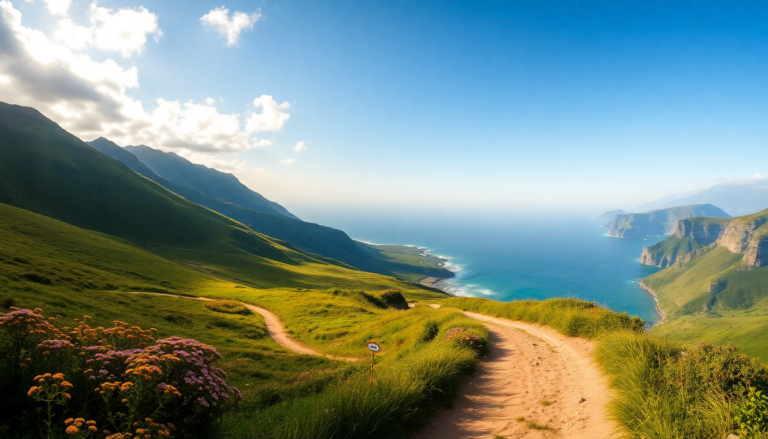Argomenti trattati
If you’re dreaming of embarking on the Camino de Santiago but are craving a journey that seamlessly blends ocean views and stunning mountain landscapes, the Northern Way – or Camino del Norte – might just be your perfect adventure. This ancient route, often referred to as the Camino de la Costa, winds along Spain’s northern coastline, taking you through the picturesque Basque Country, Cantabria, Asturias, and Galicia, all the way to the historic city of Santiago de Compostela.
Setting the Scene: A Historical Overview
The Northern Way stretches approximately 825 kilometers, though you might see numbers ranging from 814 to 830 kilometers depending on the source. It’s the second longest route to Santiago, just behind the Via de la Plata. Typically, pilgrims break the journey into 33 walking stages, while cyclists may find it more manageable with about 20 stages.
What makes this path so special? Well, it’s steeped in history. During the Middle Ages, many pilgrims opted for this coastal route to avoid the inland areas controlled by Arab forces. Today, it attracts those seeking not just spiritual enlightenment but also a chance to immerse themselves in breathtaking scenery, vibrant cities, and exquisite culinary delights.
As you walk, prepare to be captivated by dramatic cliffs that overlook the Cantabrian Sea, lush forests in Asturias, charming fishing villages, and the rolling hills of Galicia. Unlike the more popular Camino Francés, the Northern Way offers a more rugged experience with plenty of ascents and descents, so a moderate level of fitness is essential.
The number of stages may vary based on how you want to tackle the journey, but generally, 33 stages are accepted. You can walk the Northern Way any time of year, but aiming for mid-May to October is ideal when the weather is mild and the days are bright. While July and August are popular among European pilgrims, consider avoiding peak hours to truly soak in the peaceful ambiance.
Getting Ready for the Northern Way
The coastal climate can be quite unpredictable, with fresh, humid conditions where sudden rain showers and strong winds are common, especially in the Basque Country and Galicia. Prepare for foggy mornings in the mountainous stretches of Asturias. Completing the entire Northern Way on foot typically takes between 30 to 40 days, although many choose to break the experience into manageable segments or focus on specific areas.
This trek isn’t for beginners; its hilly terrain demands a solid fitness foundation. Aim to start daily walks at least two months before your trip, gradually increasing your distance while breaking in your boots and testing your backpack. Don’t forget to include stretching and strengthening exercises for your calves and quadriceps to help ward off injuries and joint pain.
But it’s not just about the physical challenge; the Northern Way is a captivating journey through centuries of history, art, and culture that dot Spain’s northern coast. Starting in Irún, a bustling crossroad rich in French and Basque influences, you’ll make your way to the elegant San Sebastián, where the stunning Concha Bay and its vibrant old town, brimming with pinchos, await you. Along the coast, hidden treasures like Getaria and Zumaia reveal breathtaking views of flysch cliffs and the Cantabrian Sea, while Gernika, with its Casa de Juntas and sacred tree, evokes the poignant history immortalized by Picasso.
A Culinary Odyssey Along the Route
As you wander through this stunning landscape, the Northern Way becomes a gastronomic adventure, showcasing the best of Spanish cuisine. Each region has its own specialties and local wines. Almost everywhere you look, bars and restaurants offer the traditional pilgrim’s menu: simple yet satisfying. Relish classic pintxos and fresh seafood in the Basque Country, indulge in hearty fabada stew and local cider in Asturias, and savor octopus and the delightful “tarta de Santiago” in Galicia.
The Northern Way is infused with a subtle spirituality, hidden among remote hermitages, ancient monasteries, and enduring oral traditions. Unlike the more crowded Camino Francés, this path intertwines the sacred with mystery, nature, and pagan roots transformed into Christian practices.
One of the most significant figures along the way is St. James, whose presence is felt from the journey’s early stages. In the church of San Giacomo in Irún, you’ll find one of many statues of the pilgrim saint, acting as a protective symbol for those who set forth. Further along in Gernika, legend has it that St. James preached beneath the famous tree, which later became a symbol of Basque rights and freedoms.
As you pass through Zumaia, be sure to visit the hermitage of San Telmo, perched dramatically over the ocean. It’s said that this site has been safeguarded by the patron saint of sailors, revered by pilgrims for protection against storms and misfortunes along the coast. San Telmo (Pedro González Telmo) is a recurring character in the folk tales of the Cantabrian coast, often invoked during perilous journeys.
Finally, as you reach Galicia, you’ll step into a realm where the sacred and the magical have coexisted for centuries. Look for carved crosses in the walls, tales of meigas (witches), and miraculous saints that weave in and out of stories about Santiago. The Monastery of Sobrado dos Monxes stands out as one of the most spiritually significant spots along the journey, not just for its architectural splendor but also for the contemplative life that continues within its walls.

